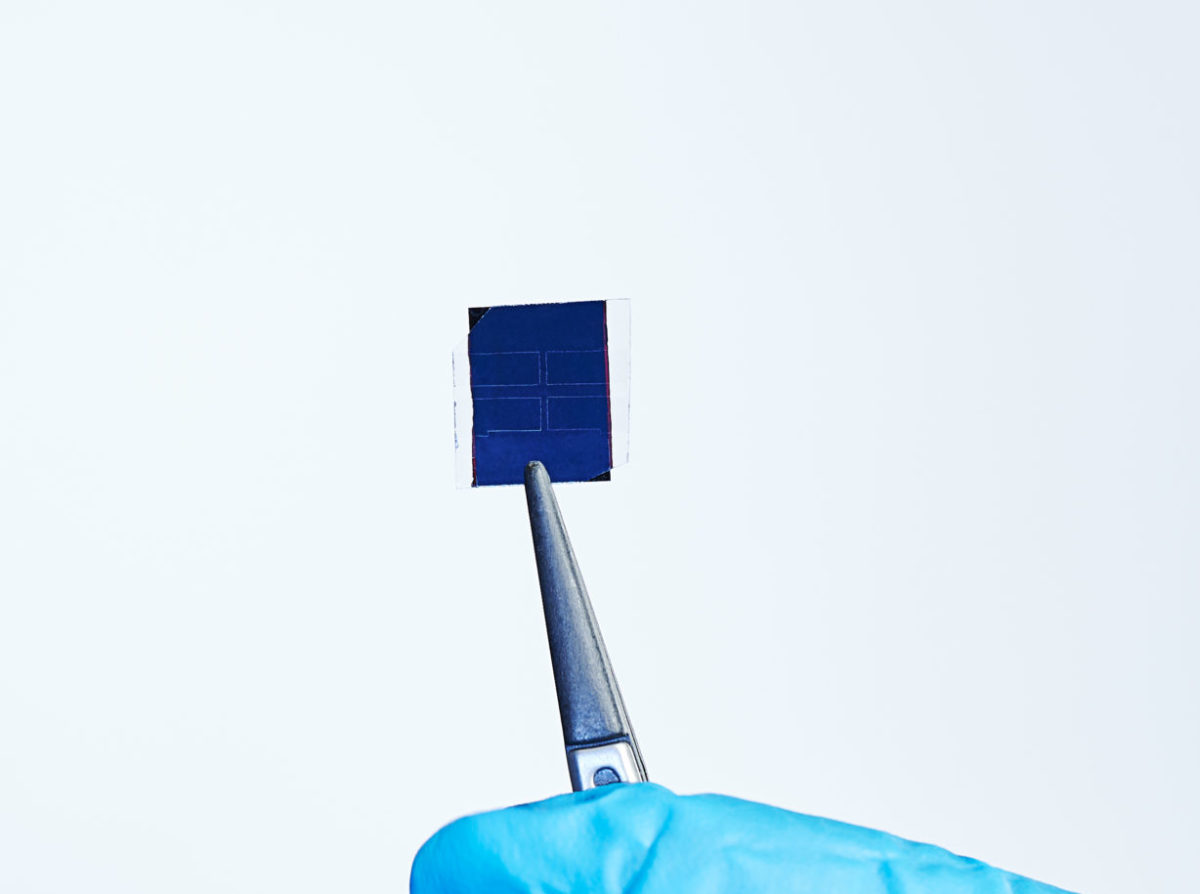A group of researchers from the Karlsruhe Institute of Technology (KIT) and the Forschungszentrum Jülich GmbH in Germany has developed a monolithic perovskite-silicon solar cell with a power conversion efficiency of 20% via a new lamination approach.
“In our work, we investigate how this lamination process can be applied to the highly promising perovskite/silicon tandem technology,” the research's corresponding author, Uli Paetzold, told pv magazine. “The presented solar cells are the very first prototypes and highlight that lamination is a suitable alternative fabrication method for monolithic perovskite/silicon tandem solar cells. The lamination approach is particularly interesting for perovskite-based PV, as it notably increases the degree of freedom in the choice of materials and accessible deposition techniques.”
With the proposed approach, the cell's functional layers such as charge transport materials, electrodes, and perovskite absorbers are processed in the same way as in devices fabricated using the standard sequential layer deposition method. “The laminated tandem device consists of two independently produced half-stacks hot-pressed together,” the scientists said. “The combination of heat and pressure promotes perovskite recrystallization, thus creating an intimate contact at the interface.”
They applied pressure of 80 MPa and a temperature of 90 C during lamination for a duration of 5 minutes and claimed this process is beneficial to the perovskite morphology, as it reduces non-radiative recombination losses. “The perovskite thin-film recrystallizes and unites both half-stacks into a monolithic perovskite/silicon tandem solar cell,” they explained, noting that the root mean square (RMS) roughness of perovskite film decreased from 20.0 to 1.7 nm after lamination, and that the grain size of perovskite increased from 284 to 350 nm.
The laminated cell achieved an efficiency of 20.0%, an open-circuit voltage of 1.75 V, a short-circuit current density of 15.5 mA cm−2, and a fill factor of 73.6%. “As expected in a monolithic tandem device, the open-circuit voltage of the tandem solar cell nears the sum of the voltage of both sub-cells,” the researchers specified. Furthermore, the device was able to retain 93% of its initial efficiency after 100 hours at a temperature of 80 C.
The scientists also noted that the solar cell also exhibited negligible hysteresis – an effect that afflicts perovskite devices because their output depends on a variety of previous inputs rather than just their immediate condition, rendering performance less predictable. In perovskite cells, hysteresis is strictly dependent on the composition of the material. Ion migration and non-radiative recombination near interfaces are generally considered responsible for the effect.
They introduced the lamination process in the paper “Laminated Monolithic Perovskite/Silicon Tandem Photovoltaics,” published in Advanced Energy Materials. “Our work paves the way for new tandem device architectures to further improve power conversion efficiencies and device stability,” Paetzold said. “To date, laminated perovskite solar cells are manufactured at lab-scale and up-scaling is one of the next steps in further development of this technique. In fact, lamination via hot-pressing is an easy fabrication route, which enables production in parallel of the device half-stacks and offers a possible direct encapsulation. If we compare it to established industrial technologies like lamination for encapsulation or roll-to-roll processes, the lamination approach seems to be fully suitable for future commercial production.”
This content is protected by copyright and may not be reused. If you want to cooperate with us and would like to reuse some of our content, please contact: editors@pv-magazine.com.




Thanks a lot for the wealth of information on the state-of-art photovoltaic technology. I really appreciate your services.
Excellent and Congratulations !
Temperature Stability is very good. However, the main problem with this technology is its humidity effect/stability. The IEC deisign qualification standard mentions 85% RH. Any study or data in this dircetion?
Thanks